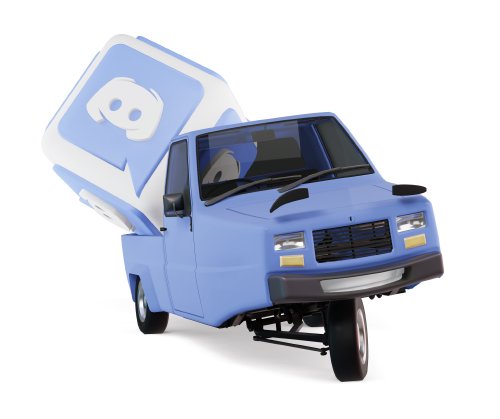Jbeam files are divided into multiple sections which each represent one type of element in a vehicle’s structure.
Basic structural elements
These are the main elements of any jbeam, and handle the shape and collisions of a vehicle.
For more information you can read the intro to jbeam
- Nodes
: The first element in a node/beam structure. They are point masses and handle most of a jbeam’s colisions along with the weight of the structure.
- Beams
: Conectors between nodes. Beams allow for flexibility and deformation in a jbeam structure, and define how the different elements are connected to each other.
- Triangles
: Surfaces defined between nodes. Triangles are used for aero calculations, and for colisions between vehicles.
Advanced structural elements
These elements allow for more advanced structural elements, and can be very useful in specific applications
- Hydros
: Beams whose length can be changed on command.
- Rails and slidenodes
: Allows the definition of nodes that slide along a rail. Used for things like steering racks, rigidifying some structures, etc
- Thrusters
: Allows to propel structures directly. Used for testing purposes, jato and others.
- Torsion bars
: Creates a torsion resistance between two lever arms. Used for sway bars and to rigidify some structures.
- Torsion hydros
: Similar to hydros, but insteads changes the angle between 2 lever arms. Used for some steering systems, and other types of actuators.
Part slot system
These elements are mostly used within the part/slot system
, either to define some additional information related to the part, or the slots within a part.
- Information
: Defines a few basic parameters associated to the component, like it’s display name in the part selector.
- Slots
: Defines the list of slots within a component, along with the default selection.
Graphical and sound elements
These elements handle the various
- Flexbodies
: Defines the models that will be used to graphically represent your vehicle, and how they are tied to the nodes for deformation.
- Glowmaps
: Allows the definition of materials that can switch on demand. Mostly used to switch the material of lights to an emmissive material when the lights are turned on.
- Soundscape
: Defines sound effects to be played when certain conditions are met, along with the node used as an emitter.
- Cameras
: Defines the position and angle of the various cameras in the vehicle, including exterior and interior cameras.
- Props
: Animated 3d elements that do not deform with the jbeam structure. Used for things like gauges, pedals, steering wheels, etc.
Powertrain
The last section is the elements related to powertrain components, like powertrain definitions and wheels.
- Powertrain
: Used to define the different powertrain elements within a vehicle’s powertrain.
- Pressure Wheels
: Allows to define wheels with a pressured tire model.
- Rotators
: Alternative to pressure wheels in specialised applications, where power needs to be sent to something other than a wheel like a propeller.
Others
- Variables
: Allows the definition of adjustable parameters for a vehicle, usually adjustable suspension and drivetrain components.
- Triggers
: Defines set triggers that the player can activate with the mouse to control different functions of a vehicle.
- Refnodes
: Set of nodes which define the central coordinate system of a vehicle
- Controller
: Used to add special functions to a vehicle, like police lightbars, electronics assists, etc.
Section use
Here is how often the various sections show up in the jbeam of all vanilla content.
Keep in mind that some of those sections, like “mainEngine”, do not really correspond to a jbeam section, but are instead part of an other section that got defined separately for clarity. Those mostly happen with controllers and more complex powertrain elements.
Version
0.38.3.0 uses the following sections:
Name
tailgateCouplerUpper
Name
tailgateLatchCoupler
Name
tailgateCatchCoupler
Name
adaptiveFrontSwayBar
Name
fifthwheelSlideMovement
Name
shiftLights_digidash
Name
interaxleLockControl
Name
safetyBar_BeamSoundData
Name
panel_access_RR_coupler
Name
airbagCrossFlow_lift
Name
panel_access_grille_RR_coupler
Name
doors_F_BeamSoundData
Name
emergencyWindowRRCoupler
Name
airbagBeamSoundData_liftAxle_main
Name
batteryBoxDoorCoupler
Name
emergencyWindowFLCoupler
Name
compartmentDoorFCoupler
Name
portaPottyDoorCoupler
Name
airbagCrossFlow_main
Name
prisonbusGateFCoupler_L
Name
slidingDoorMoovement_RL
Name
slidingGateDoorMovement_L
Name
emergencyWindowRLCoupler
Name
slidingGateDoorMovement_R
Name
airbrakes_F_twinsteer
Name
frontHatchOpenCoupler
Name
panel_access_transmission_coupler
Name
catwalk_R_railing_door_coupler
Name
panel_access_RL_coupler
Name
panel_access_grille_RL_coupler
Name
emergencyWindowFRCoupler
Name
rearHatchOpenCoupler
Name
airbagBeamSoundData_liftAxle_lift
Name
portaPottyLockCoupler
Name
rearHatchPopUpCoupler
Name
frontHatchPopUpCoupler
Name
prisonbusGateRCoupler
Name
prisonbusGateFCoupler_R
Name
compartmentDoorRCoupler
Name
slidingDoorMoovement_RR

